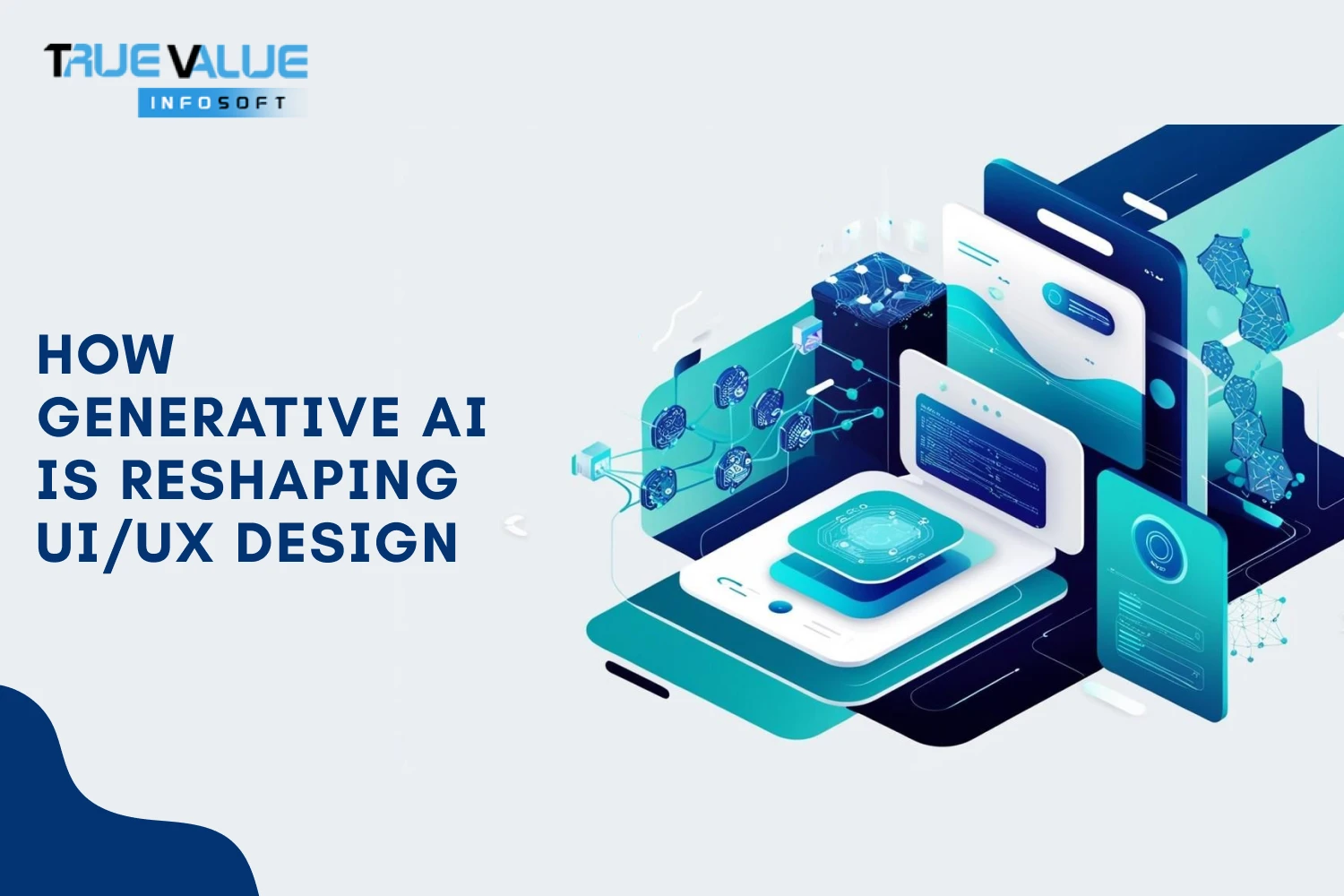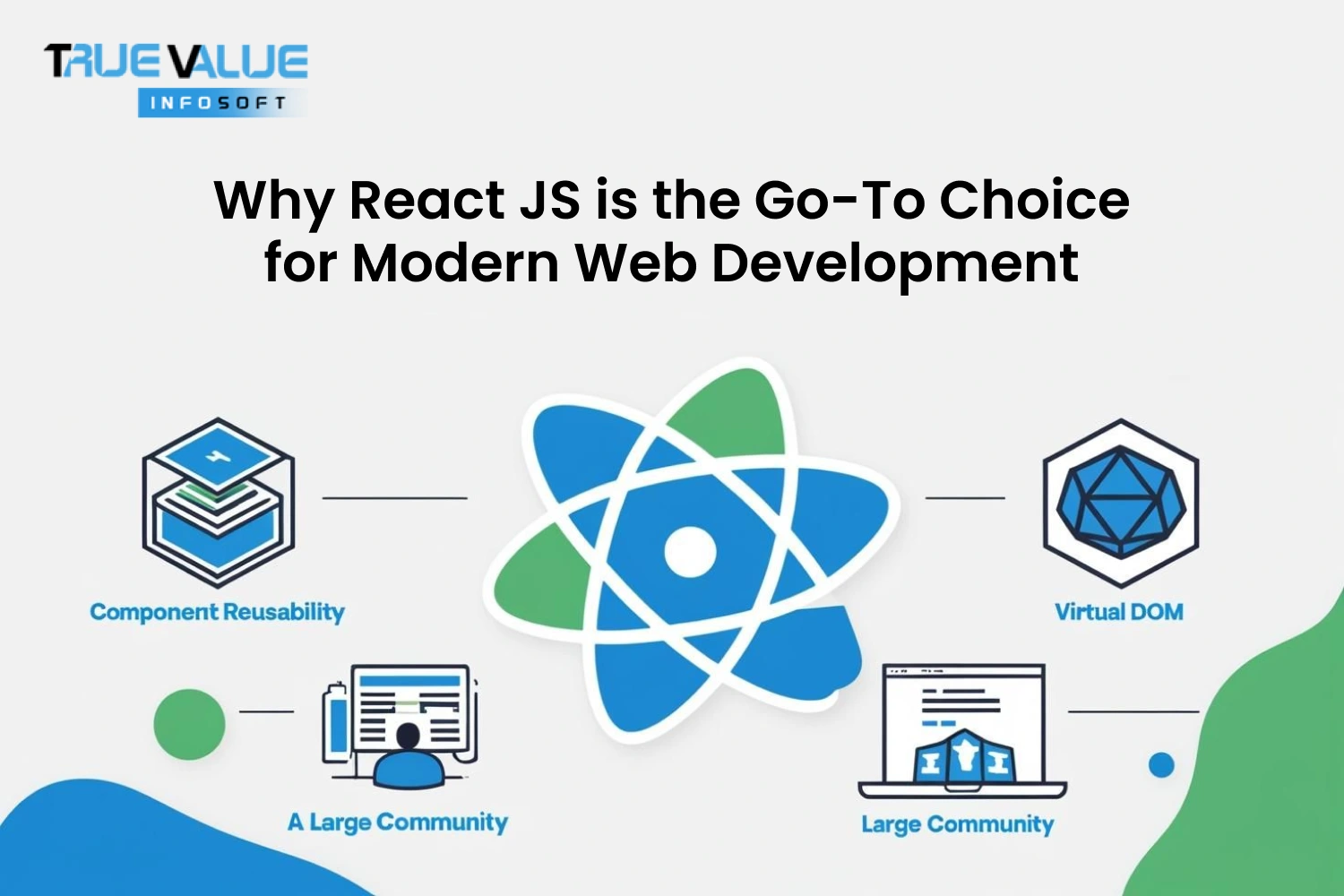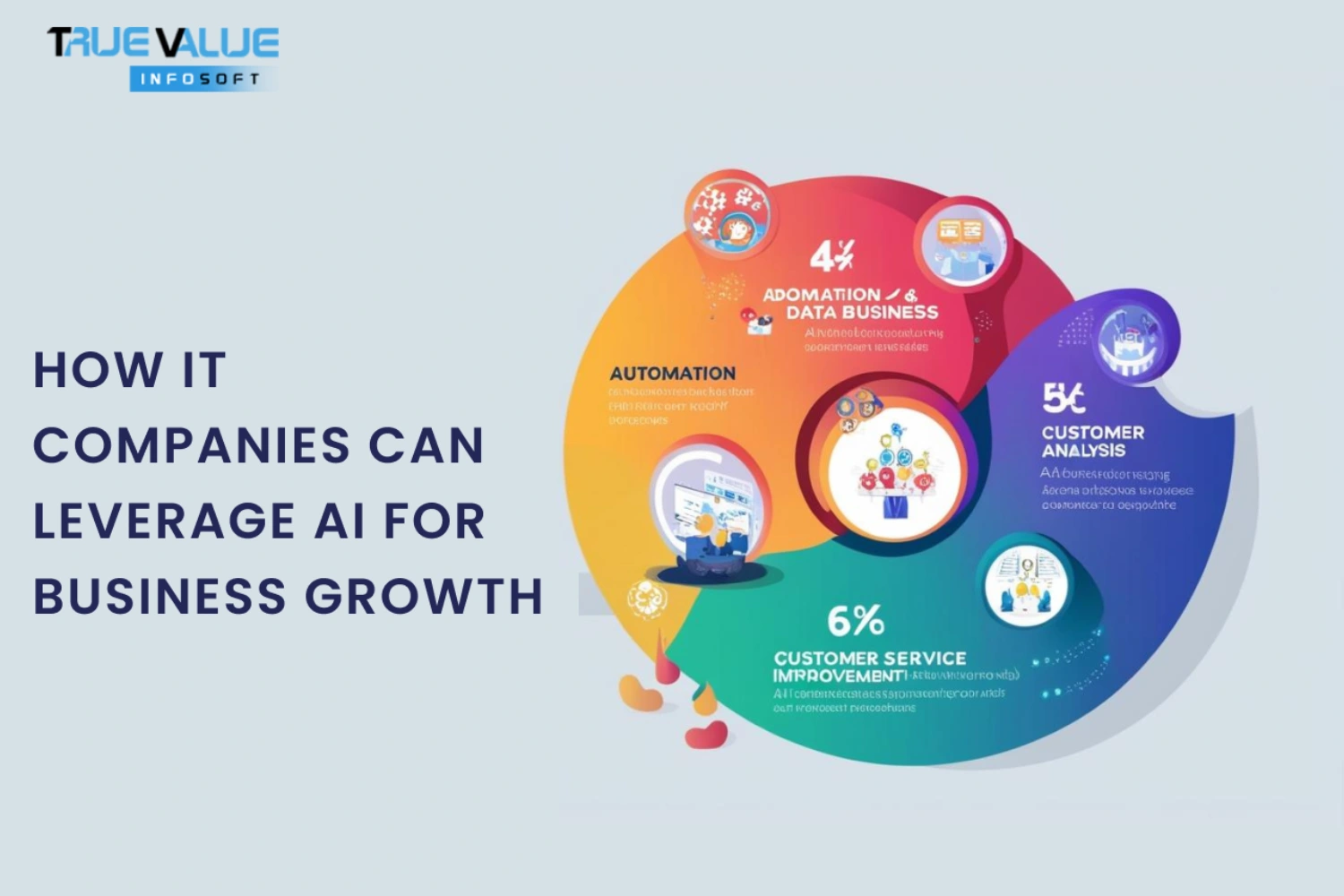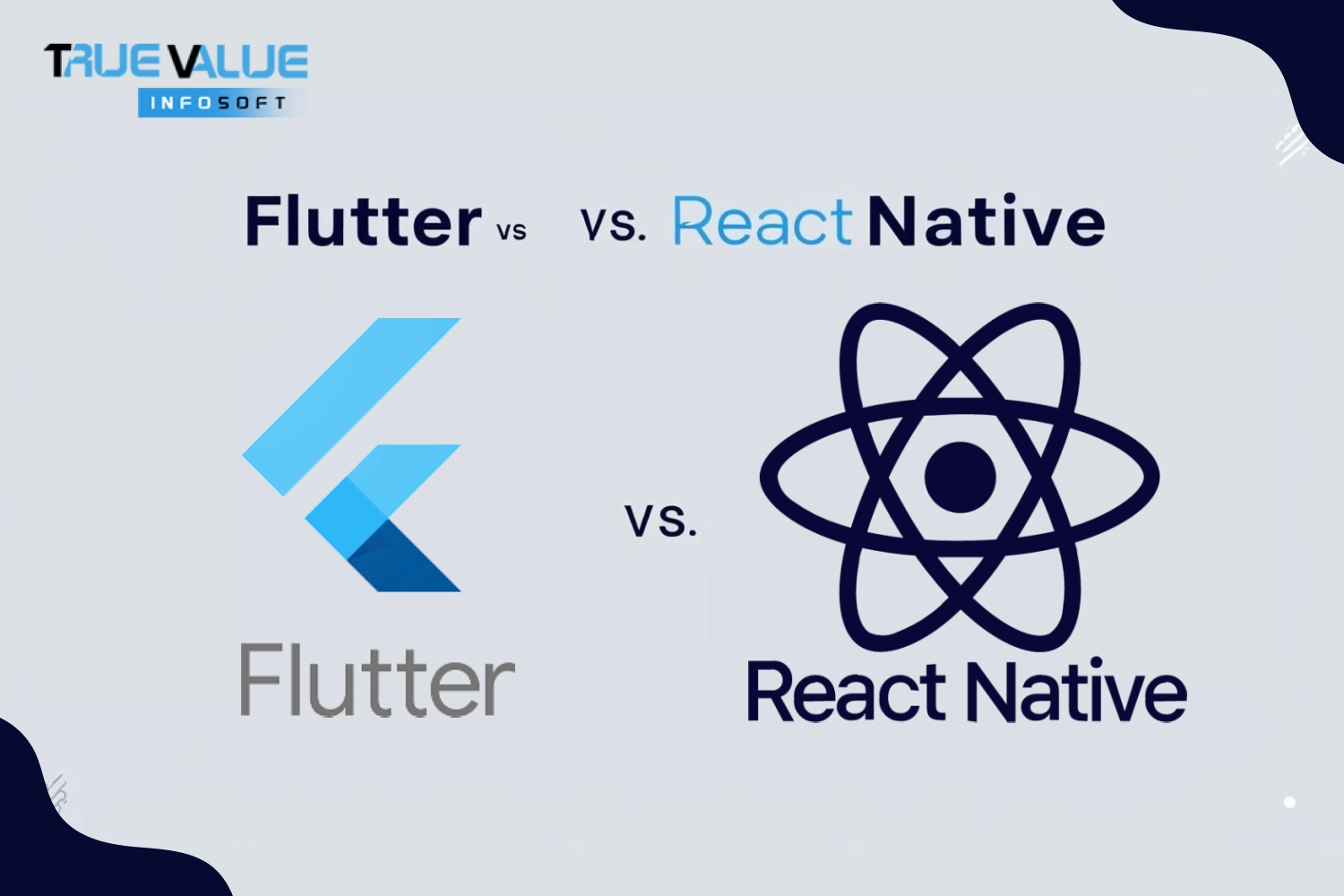Introduction
UI/UX design is no longer just about intuition, creativity, and user psychology—it’s increasingly about algorithms, automation, and artificial intelligence. In 2025, the emergence of Generative AI is transforming the way designers approach digital interfaces, unlocking new levels of efficiency, personalization, and innovation. From wireframe generation to dynamic prototyping, this new wave of intelligent tools is reshaping the landscape of user experience design.
At True Value Infosoft the best UI/UX design and app development company in India, we’re at the forefront of integrating AI into our design processes. Our designers and developers are now equipped with AI-powered platforms that not only speed up the workflow but also enhance the end-user experience. So, how exactly is Generative AI transforming UI/UX design? Let’s dive in.
Understanding Generative AI in UI/UX
Generative AI refers to a subset of artificial intelligence capable of generating new content based on a given input or data pattern. In the context of UI/UX design, this means:
- Creating mockups and wireframes automatically
- Suggesting design improvements
- Generating content for UI elements
- Adapting interfaces based on user behavior
Some popular tools leading the charge include Figma AI, Uizard, Framer AI, Galileo AI, and Adobe Firefly.
Speed and Efficiency in Design Workflows
One of the most immediate impacts of Generative AI is the acceleration of design tasks. Traditionally, designers would take hours or even days to:
- Create layout drafts
- Build user flows
- Iterate based on client feedback
Now, Generative AI enables:
- Rapid prototyping: Designers input simple text or sketches, and the AI generates full mockups.
- Automatic style guides: AI tools can replicate a brand’s design system and apply it consistently.
- Template generation: From login screens to dashboards, AI tools can instantly create on-brand UI templates.
This doesn’t just save time; it allows designers to focus on creative problem-solving and innovation.
Personalized and Adaptive User Interfaces
Generative AI can analyze large volumes of user data to build adaptive interfaces in real time. Imagine a system that:
- Adjusts font sizes for users with visual impairments
- Reorganizes dashboards based on user preferences
- Recommends actions based on behavioral patterns
By harnessing AI-driven personalization, companies can boost user engagement and conversion rates while delivering a smoother experience.
AI-Assisted User Research and Testing
Generative AI is revolutionizing user research through:
- Automated persona generation: AI can generate user personas based on analytics and behavioral patterns.
- Simulated usability tests: AI simulates user journeys and predicts friction points before real users even see the design.
- Real-time feedback analysis: Tools like Dovetail or Hotjar AI analyze qualitative feedback instantly to derive actionable insights.
This allows designers to iterate rapidly and optimize designs with real-time intelligence.
Content Generation and Localization
Writing meaningful microcopy—like error messages, onboarding guides, or CTA buttons—is time-consuming. Generative AI automates this by:
- Generating UX copy based on context
- Translating content into multiple languages
- Optimizing headlines and descriptions for clarity
For global businesses, AI also assists in localizing interfaces while maintaining cultural relevance.
Enhancing Accessibility and Inclusivity
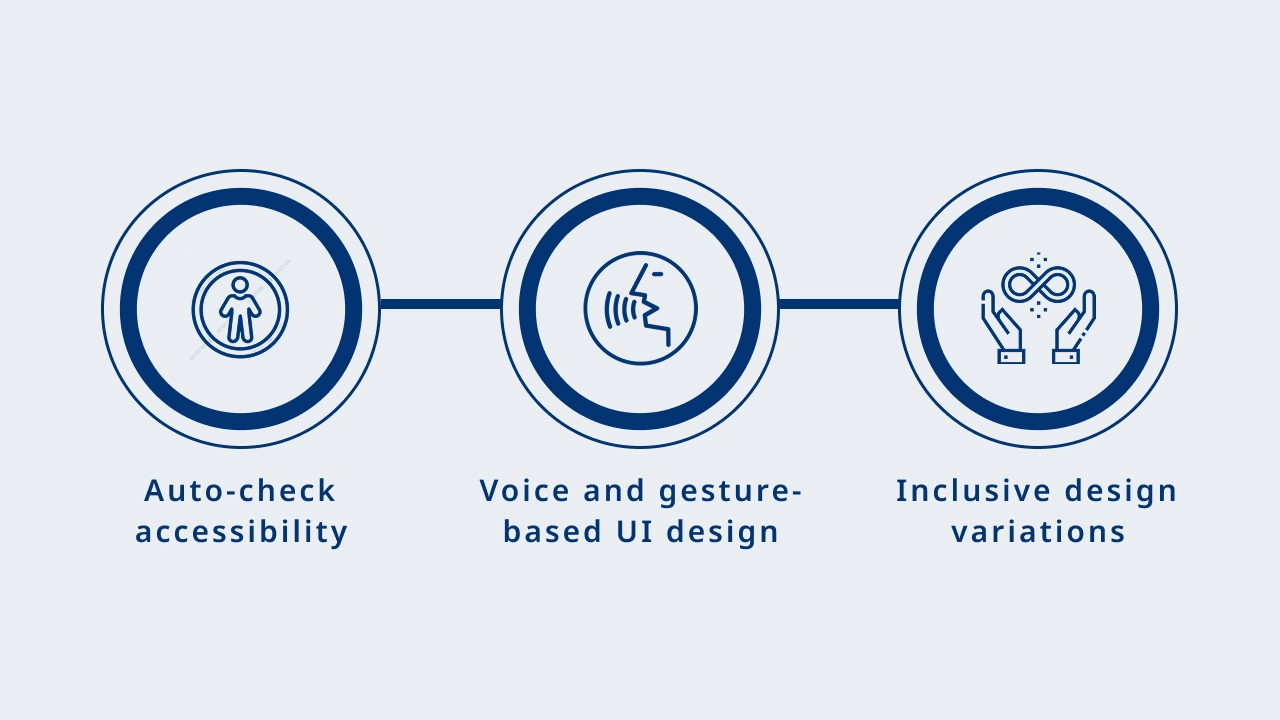
Generative AI aids in creating designs that cater to all users, regardless of ability:
- Auto-check accessibility: AI tools evaluate color contrast, font size, and alt text coverage.
- Voice and gesture-based UI design: AI helps craft interfaces for users with limited mobility or vision.
- Inclusive design variations: AI generates alternatives for neurodiverse users, like reduced animation modes.
This ensures that digital products are truly user-friendly for everyone.
Bridging the Gap Between Designers and Developers
Design handoffs are often bottlenecks in digital product development. Generative AI is eliminating this friction by:
- Auto-generating code snippets from UI designs
- Creating design system documentation on the fly
- Maintaining consistency across screens and components
Platforms like Anima and Locofy.ai allow for seamless integration between design and development, reducing back-and-forth and accelerating time-to-market.
Dynamic Design Systems Powered by AI
Modern design systems are evolving from static libraries to intelligent, evolving ecosystems. With Generative AI:
- Design tokens are updated dynamically
- Components are suggested based on project context
- Visual consistency is maintained across projects automatically
This results in scalable, future-proof design systems that adapt with product needs.
Challenges and Ethical Considerations
Despite its advantages, Generative AI brings challenges:
- Creativity vs automation: Overreliance on AI may stifle original design thinking.
- Bias in AI models: If training data is biased, outputs can be exclusive or discriminatory.
- Job displacement fears: Some worry AI will replace human designers
To address these, companies must blend AI with human oversight, ensuring ethical and inclusive design practices.
The Future of Human-AI Collaboration in Design
Rather than replacing designers, Generative AI is becoming their creative co-pilot. The future of UI/UX design involves:
- Collaborative creation: Designers and AI working together in real time
- Voice-commanded design workflows
- AI feedback loops: Continuous design improvements from user interactions
Designers must evolve into design strategists, leveraging AI to deliver better, faster, and more impactful solutions.
Case Studies: How Leading Companies Are Using Generative AI
Airbnb
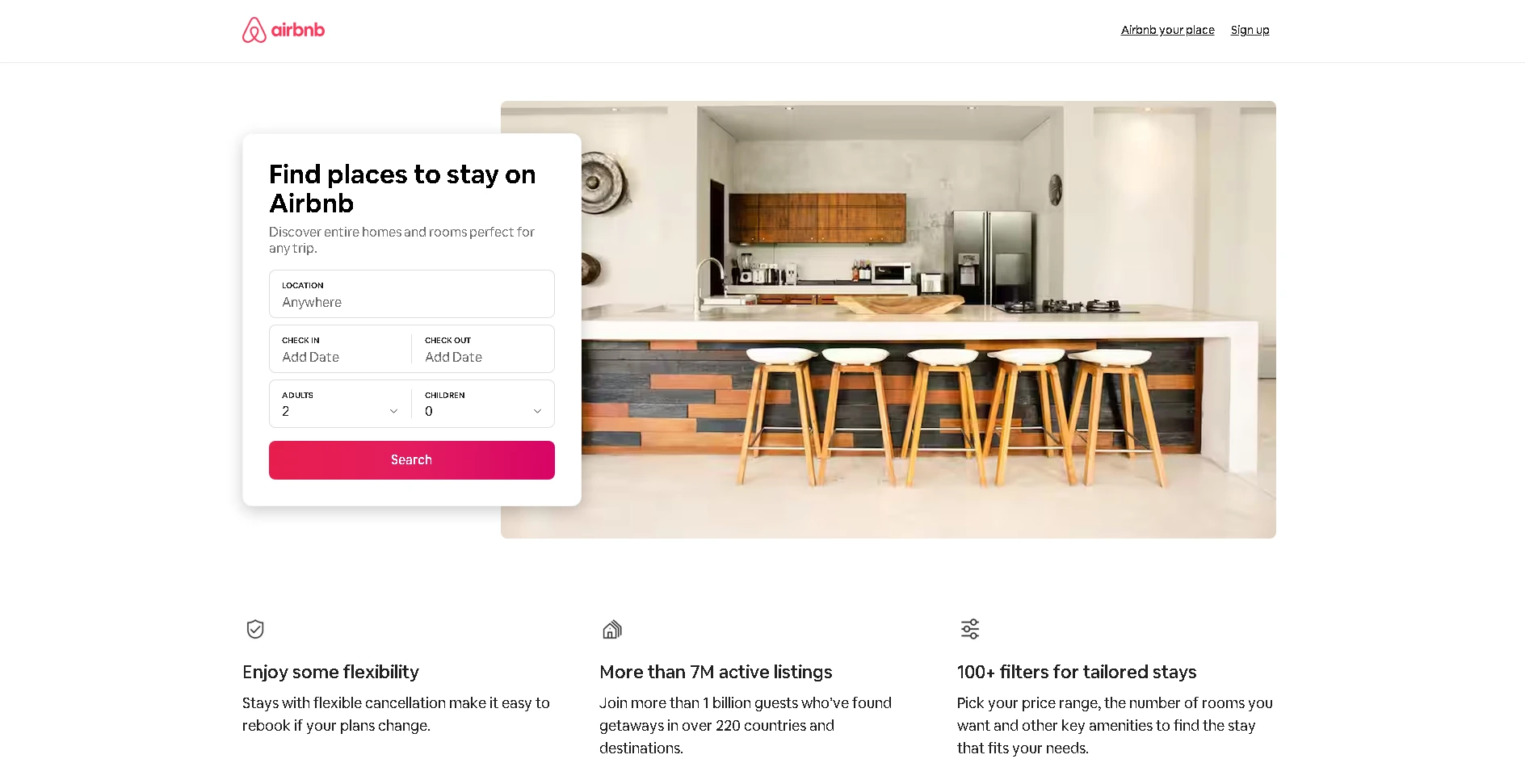
Airbnb’s AI-driven design system helps auto-generate UI components and streamline prototyping.
Notion
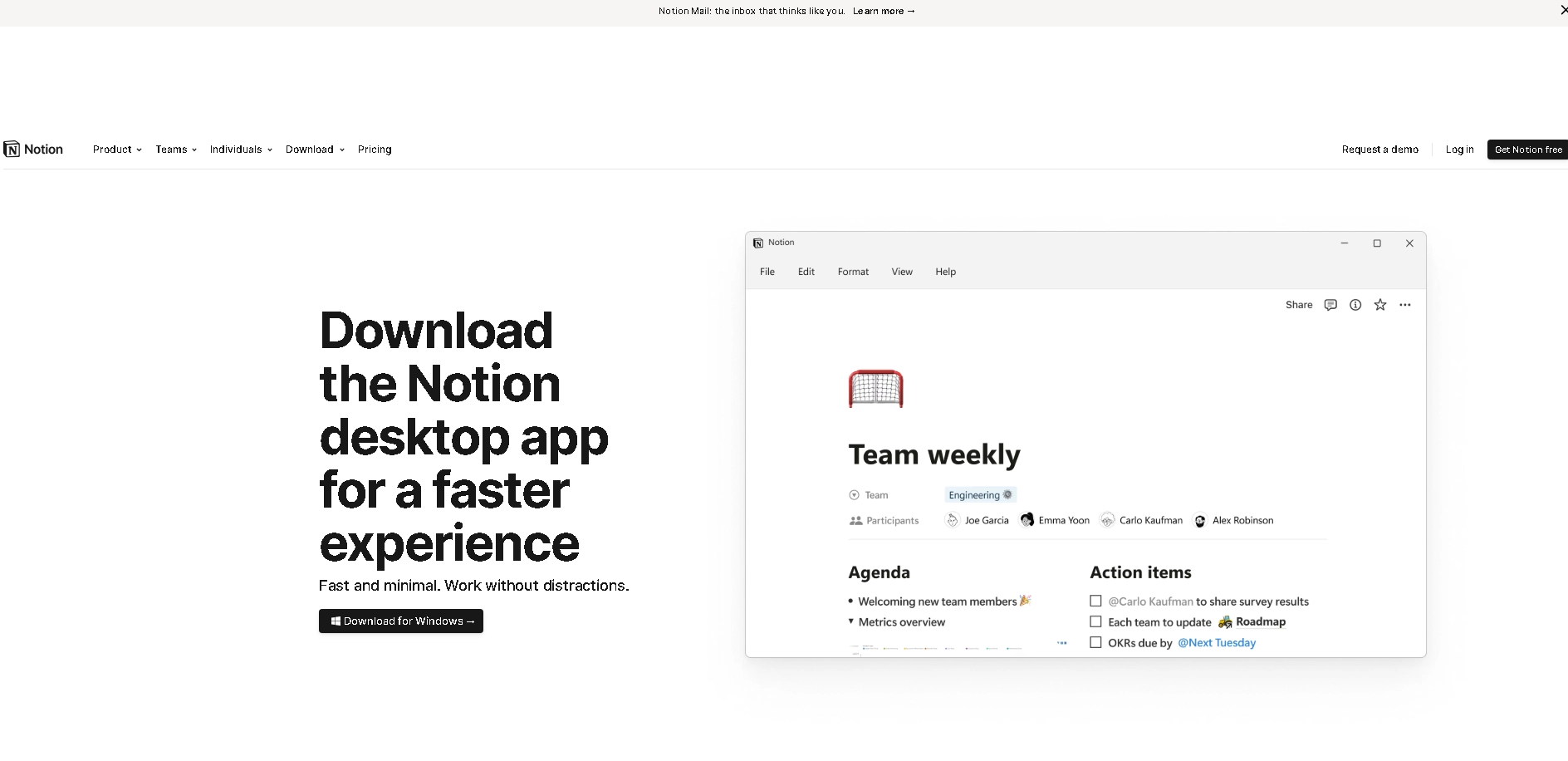
Notion's AI assistant drafts templates and adjusts layout ideas based on user commands, enhancing customization.
Canva
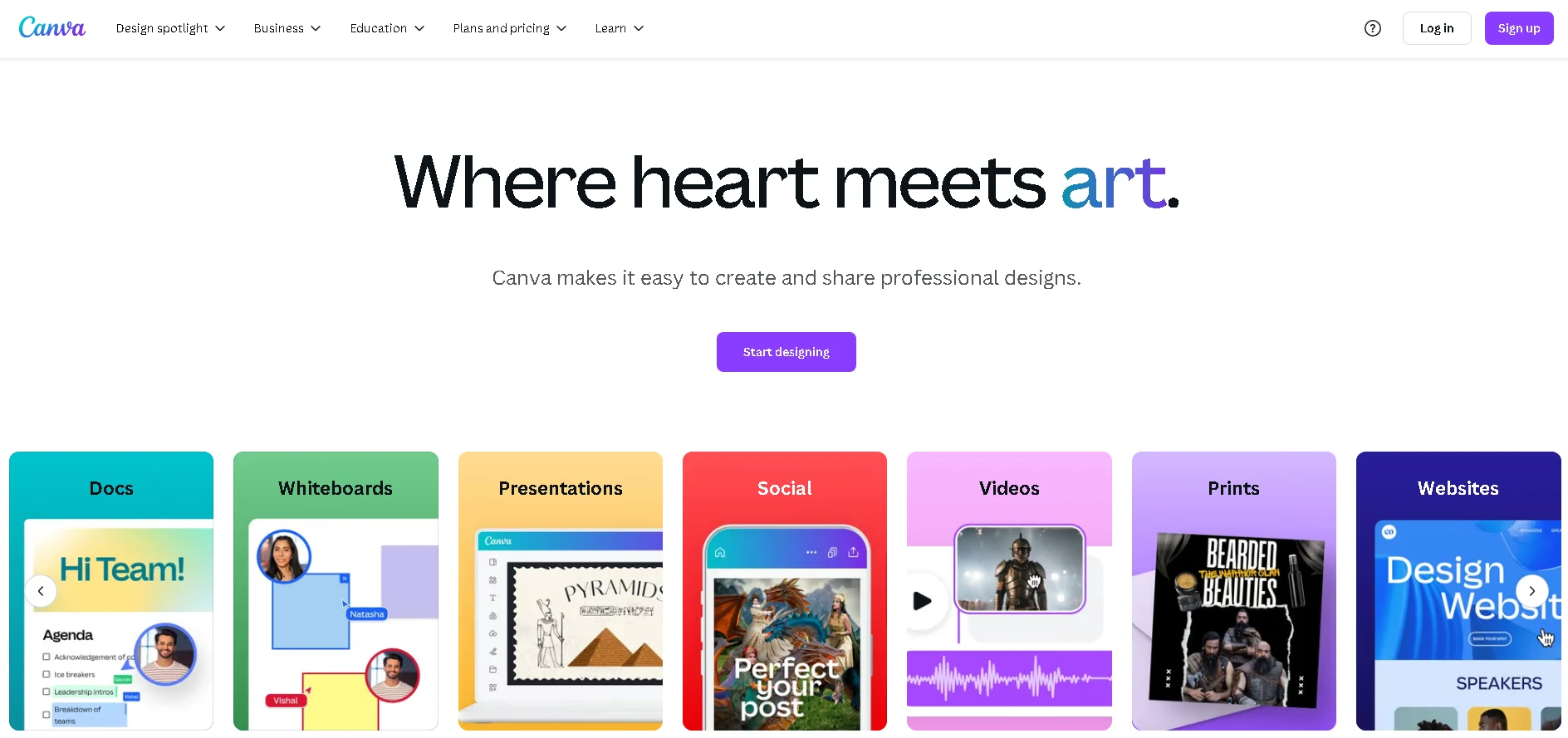
Canva’s Magic Design and AI Text Generator let users build complete presentations and designs in seconds.
At True Value Infosoft
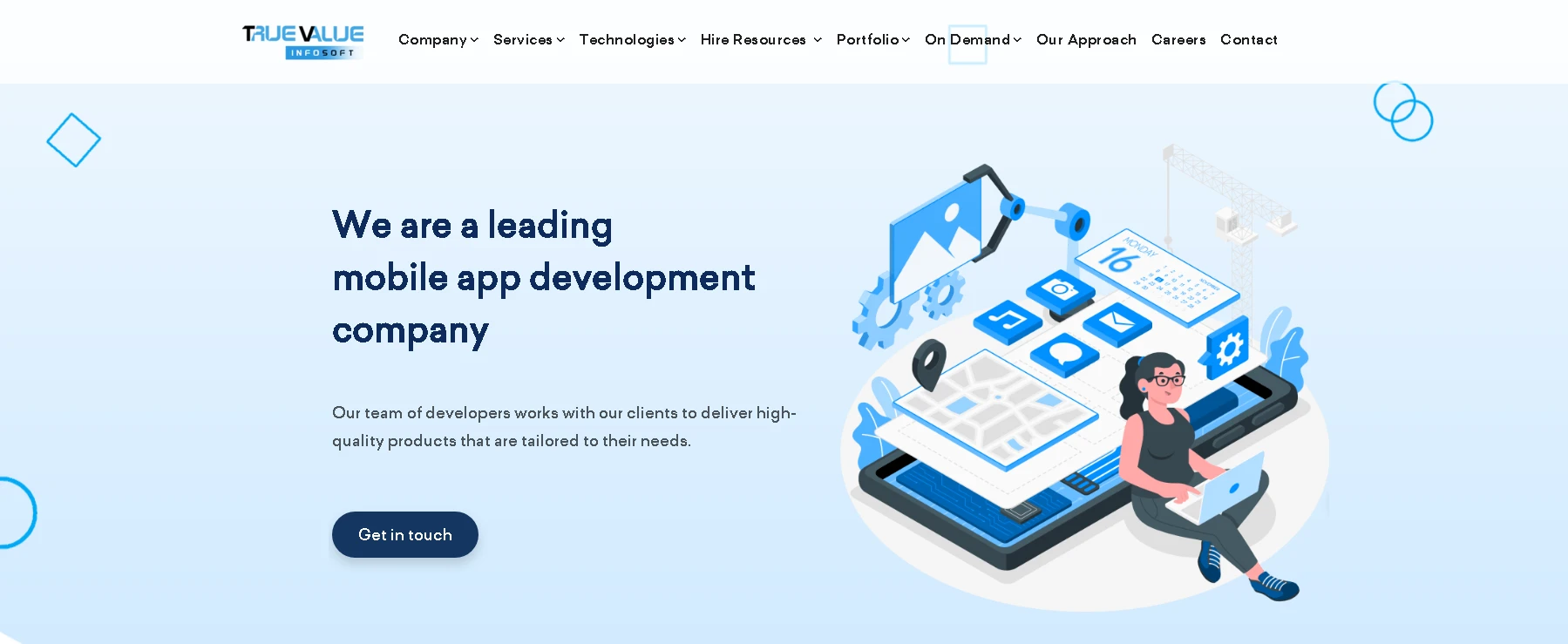
We’re leveraging Generative AI to help clients across industries launch intuitive, adaptive digital products faster than ever. Our AI-integrated design processes result in shorter cycles, cost efficiency, and unmatched creativity.
Top Generative AI Tools for UI/UX Designers
Here’s a curated list of top tools:
| Tool | Features |
|---|---|
| Figma AI | Autocomplete designs, suggest layouts |
| Galileo AI | Generates UI from natural language prompts |
| Uizard | Turns sketches and prompts into prototypes |
| Framer AI | AI-assisted real-time website builder |
| Adobe Firefly | AI image generation and design elements |
| Anima | Design-to-code automation |
| Magician (for Figma) | Text-to-UI magic within Figma |
These tools are now an essential part of the modern design stack.
Training Designers to Work With AI
As AI becomes integral to design, training becomes essential:
- Upskilling in prompt engineering
- Learning AI-integrated design tools
- Understanding data and analytics for UI decisions
At True Value Infosoft, we conduct regular workshops and certifications for our designers to stay ahead of the curve.
Economic Impact and Industry Trends
Generative AI is making UI/UX design more affordable, scalable, and democratized:
- Startups can launch products with limited resources
- Freelancers can deliver high-quality designs faster
- Enterprises can personalize at scale without expanding their design teams
According to industry reports, AI-powered design workflows can reduce design costs by up to 40% and speed up time-to-market by 60%.
Conclusion
The UI/UX design world is entering a new era—one where human creativity meets machine intelligence. Generative AI is not here to replace designers, but to empower them with tools that unlock new possibilities, accelerate processes, and craft more personalized, accessible, and adaptive digital experiences.
At True Value Infosoft, the best UI/UX design company in India, we’re pioneering this transformation—combining our design expertise with cutting-edge AI tools to deliver outstanding digital products.
Whether you're a startup, enterprise, or design enthusiast, embracing Generative AI is no longer optional—it’s the future of UI/UX design.
FAQs
Generative AI in UI/UX uses machine learning models to automatically generate user interface designs, layouts, content, and even code based on inputs or patterns, accelerating and enhancing the design process.
No. AI acts as a supportive tool. Human designers still bring creativity, empathy, and strategy that AI cannot replicate. The future is human-AI collaboration.
Figma AI, Uizard, Galileo AI, Adobe Firefly, and Framer AI are popular tools enabling AI-assisted design and prototyping.
AI enables personalization, predictive UX, adaptive interfaces, and real-time testing—resulting in more engaging, accessible, and user-centric digital experiences.
Start with AI-integrated tools like Uizard or Framer AI, learn prompt writing, and explore resources to understand how AI can assist with your design goals.
